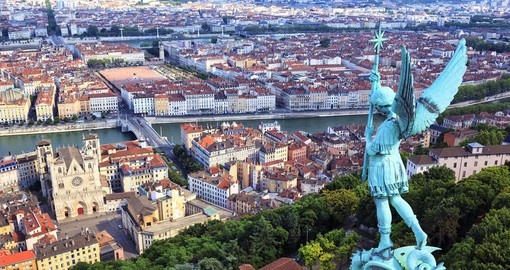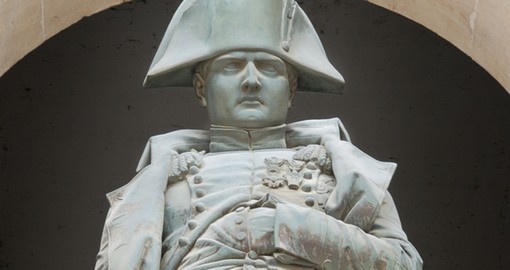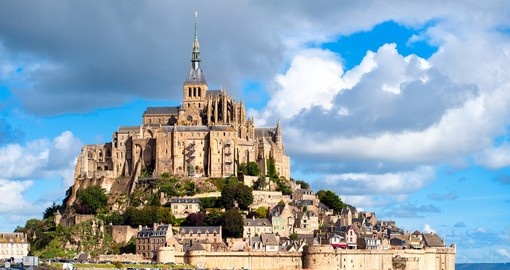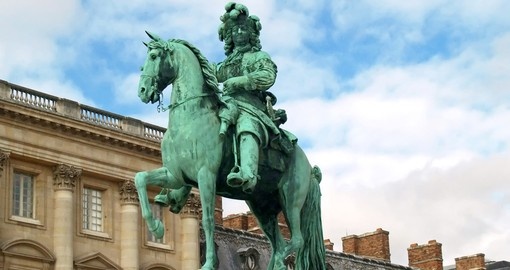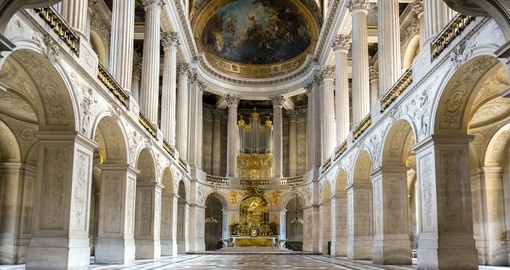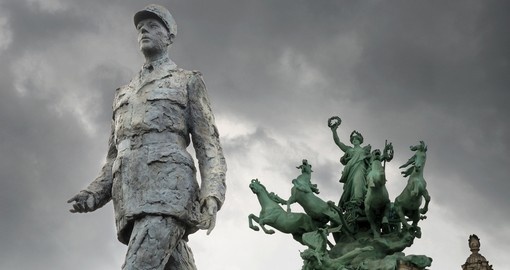France History
Skeletons found in caves during the 19th century in the Vézère Valley suggest that Neanderthals were the first people to live in France. By 6,000 BC, farming had become the way of life and small farms were scattered around the country. Beginning in 1500 BC, the Gauls began to arrive in France, establishing trading links with the Greeks.
By 121 BC, the Roman Republic began a takeover of Celtic Gaul. As time passed, Julius Caesar, leader of the Romans, launched attacks on the Gauls who had come to reside in modern-day France, Switzerland, Germany, Belgium and Luxembourg. After defeating the Gallic chief Vercingetorix in 52 BC, Caesar took control of France.
The territory remained under Roman rule until the empire began to crumble in the 5th century AD. The Franks, who lent their name to the country, as well as the Alemanni, took over where the Romans left off. From the 5th-10th centuries, France remained under the Frankish Merovingian and Carolingian dynasties. In the 9th century, Vikings raided France’s western coast and formed the Duchy of Normandy. People who settled there became known as Normans.
In 1066, William the Conqueror set out with an army of Norman soldiers to invade England. This resulted in the Battle of Hastings where the Normans were eventual victors. This meant that for the next 400 years, French became the language of the ruling class of England and many French words were introduced into the English language.
The Hundred Years War (1337-1453) was a very dangerous time for France as Britain battled for the powerful French throne. This was the time of Jeanne d’Arc, a 17-year-old warrior who, in helping lead France to victory, became a martyr for the cause. Convicted of witchcraft and heresy, Jeanne d’Arc was burned at the stake in 1431. In 1453, the English were forced out of France.
By the end of the 15th century, the Renaissance had come to France, followed by the Reformation in the 1530s. The Edict of January in 1562 afforded rights to Protestants that sparked the Wars of Religion between the Huguenots (French Protestants) and the Catholic League and monarchy. The wars raged for over thirty years causing much pain and destruction around the country.
The 17th century witnessed the arrival of Louis XIV, famously known as the Sun King. Based on a belief that he had a “divine right”, Louis engaged in many wars that gained territory but almost left the country bankrupt. During his reign, Louis was responsible for creating the first centralized French states and for building the impressive Palace of Versailles.
With the success of the American Revolution, nationalism began to spread throughout Europe. France was in a social and economic crisis that came to a head in 1789. A tiered system existed in the country with approximately 90% of the population (the Third Estate) not being represented. Frustrated with this, they called for proportional voting but were dismissed. The Third Estate declared itself the National Assembly and called for a constitution. Mobs took to the streets, storming the Bastille. The French Revolution set to change in motion in France, shifting power from the monarchy and mobility to the state. A Reign of Terror followed in which religious freedoms were revoked and approximately 30,000 French men and women had been murdered.
In 1804, Napoleon Bonaparte established a new French empire. The wars he engaged in helping him gain territory throughout Europe. Napoleon’s defeat in 1815 saw the restoration of the monarchy in France. The Second Republic was established in 1848 with the Third Republic arriving in 1870. This was an incredible time in French history with art flourishing and the hosting of the World Expo.
The World Wars were devastating to France as much of the First World War was fought on French territory, and the country was occupied during the Second World War. Charles de Gaulle’s presidency following the war provided stability to the country and the economy began to recover in the 1950s.
Today France is one of the top tourist destinations in the world, offering something for everyone. A national identity that was formed during the French Revolution still exists today and the French are an incredibly proud nation. It would take several trips to truly experience all that this unique country has to offer.
France Travel Information
At Goway we believe that a well-informed traveller is a safer traveller. With this in mind, we have compiled an easy-to-navigate travel information section dedicated to France.
Learn about the history and culture of France, the must-try food and drink, and what to pack in your suitcase. Read about France's nature and wildlife, weather and geography, along with 'Country Quickfacts' compiled by our travel experts. Our globetrotting tips, as well as our visa and health information, will help ensure you're properly prepared for a safe and enjoyable trip. The only way you could possibly learn more is by embarking on your journey and discovering France for yourself. Start exploring… book one of our France tours today!
Get a Trip Quote Order a Brochure







